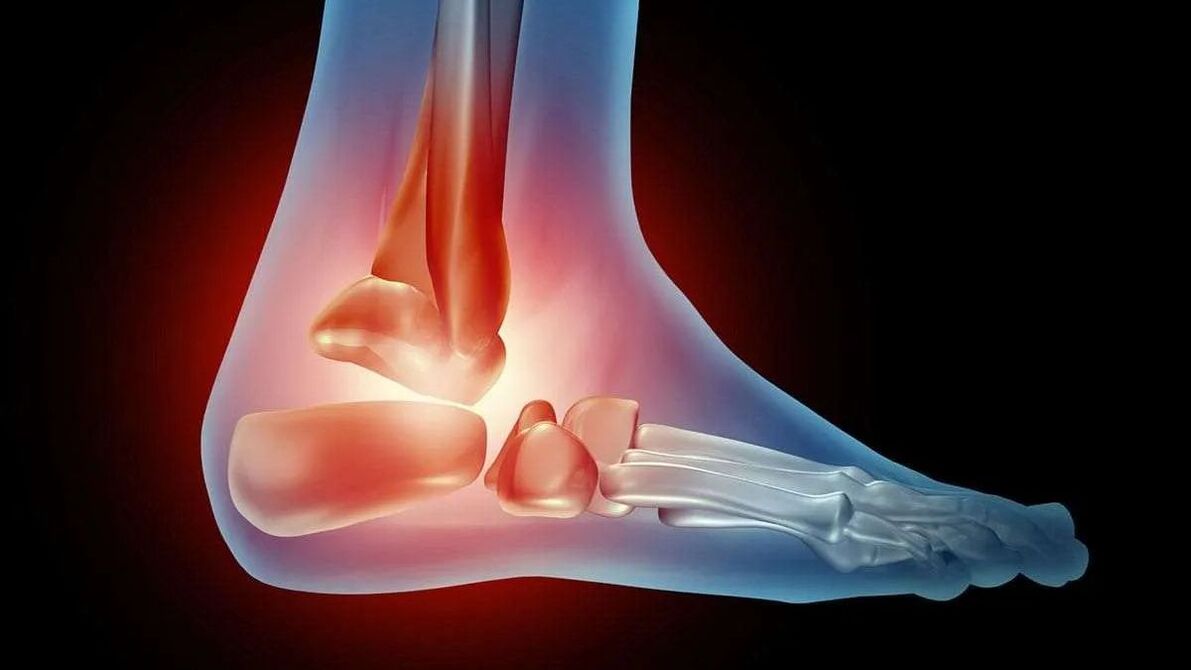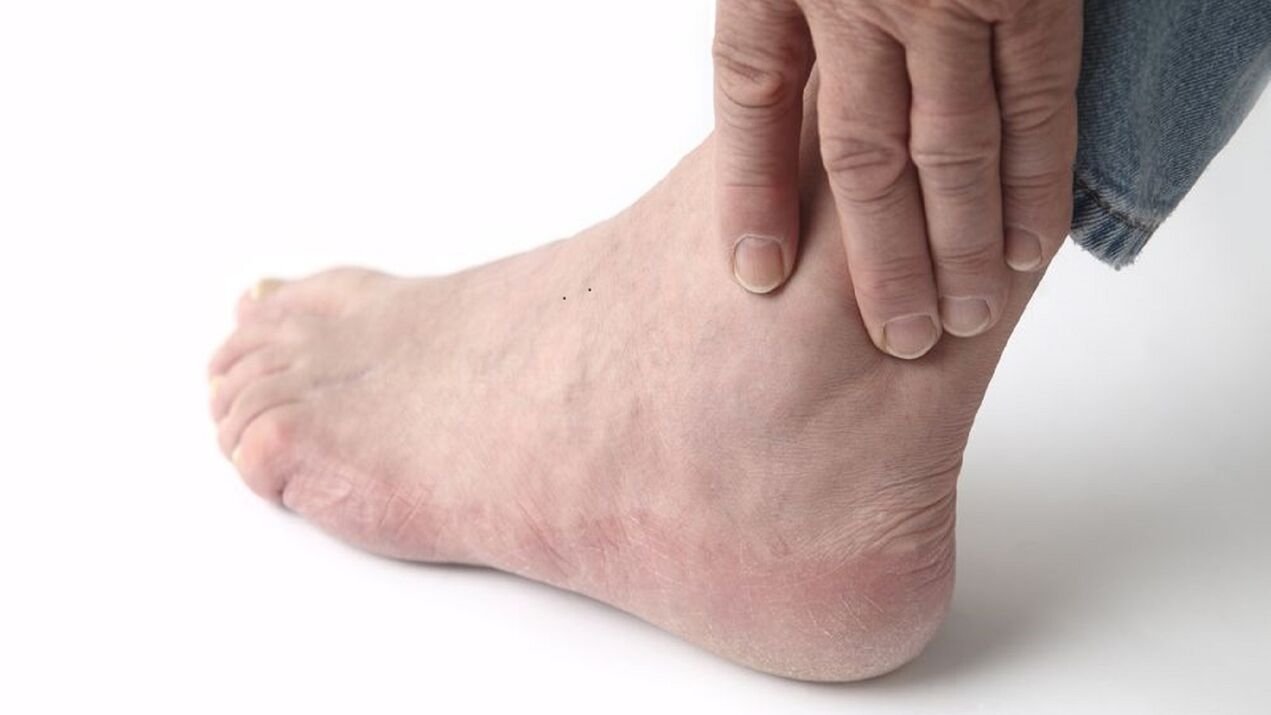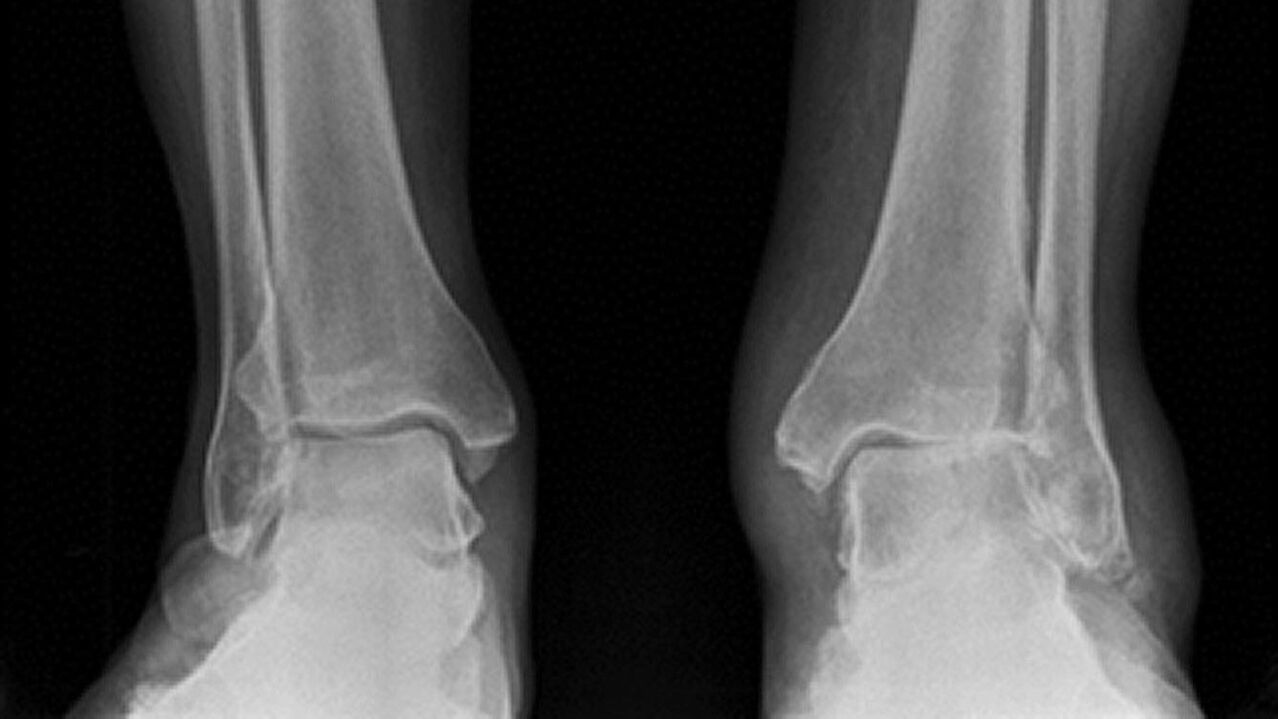As a person ages, the risk of developing spine and joint diseases increases. This is due to degenerative and destructive changes in the body. One of the common pathologies is arthrosis of the ankle joint.
Arthrosis of the ankle joint - what is it?
Ankle arthrosis is a chronic disease and cannot be completely cured. According to statistics, 10% of people suffer from this dystrophic disorder. People over 40 years of age are especially susceptible to it. This disease can cause disability. Therefore, it needs to be handled promptly and competently.

The ankle consists of the fibula, talus and tibia, two malleolus and articular ligaments. With arthrosis, inflammation and destruction of the articular cartilage occurs. Bone tissue becomes damaged and deformed as the pathology progresses.
ICD 10 code
ICD stands for International Classification of Diseases. In such documents, each disease is assigned a specific code. This code consists of letters and numbers and is included in the sick leave certificate when making a diagnosis. Thanks to him, a doctor in any country will understand what his patient suffers from and where the pathological focus is located.
The diagnosis of arthrosis is presented in a block of 5 headings and several subheadings. Ankle arthrosis falls into category M19. This section is divided into 5 subsections. The sign after the dot indicates the etiology. So, 0 – these are genetically determined degenerative changes, 1 – post-traumatic changes, 2 – dystrophic changes on the background of endocrine, vascular or inflammatory pathology, 8 – these are other specific causes, 9 – diseases of unknown cause. For example code M19. 1 is arthrosis of the ankle due to injury.
Reason
Pathology develops for various reasons. Trigger factors for the onset of the disease in adults are:
- Increased load on joints. Doctors often observe degenerative changes in cartilage and bone tissue in obese patients and professional athletes (soccer players, bodybuilders, runners, and dancers).
- Diabetes.
- Ankle injury.
- Wearing uncomfortable shoes, walking in high heels.
In children, pathology develops for the following reasons:
- Thyrotoxicosis.
- Tissue dysplasia.
- Injury.
- Genetic predisposition.
- Broken.
- Inflammation of the joints.
- Dislocation.
Symptom
The following manifestations are typical for ankle arthrosis:
- Painful. It seems after staying in one position. When a person tries to stand up and leans on his legs, he experiences sharp pain (pain) and stiffness on movement. After a few steps, the discomfort disappeared. Pain appears during and after physical activity.
- Clicking, crunching in the ankle joint while walking.
- Movement limitations.
- Swelling below the ankle.
- Hypotrophy, weakness of the ligament apparatus.
- Joint deformation (typical of advanced disease).

Degrees
There are several degrees of arthrosis. Many years have passed from the appearance of the first signs of degenerative changes in the joint to the loss of mobility. If you start therapy on time, there is a possibility of stopping the progression of the disease. The success of treatment depends on the stage at which the pathology was detected.
Degrees of arthrosis of the ankle joint:
- First. Degenerative processes are just beginning to develop and do not cause much discomfort to a person. The only symptoms are temporary morning stiffness in the legs, fatigue, and mild pain. When the legs are bent and straightened, a crunching sound occurs. No pathological changes were detected on x-ray. The prognosis for drug treatment is good.
- Second. The symptoms of the disease are getting worse. The morning stiffness does not go away for about an hour. Pain appears at the beginning of walking. After only covering a distance of 1 km, a person feels very tired in his legs. When the ankle is moved, a crunching sound occurs. X-rays show osteophytes, the convergence of bone ends. Surgical treatment is indicated.
- Third. Pain syndrome occurs not only when moving, but also at rest. A person cannot work or rest normally without anesthesia. The patient cannot move independently. X-ray images show cracks, flattening of the joint surfaces, osteophytes, and subluxations. Treatment is surgery and medication.
- Fourth. Manifestations of this disease are mild. The pain is gone. However, the stiffness of movement does not allow a person to walk. Cartilage in the fourth stage is completely destroyed. X-ray shows healing of the joint space.
Diagnostic
During diagnosis, the doctor determines the extent of the disease and identifies exacerbations. For this, laboratory and hardware techniques are used:
- Blood test (details).
- Rheumatoid test.
- Ultrasound.
- CT.
- CRP test.
- Radiography.
- MRI.

Treatment
Therapy should be comprehensive and include taking medications, using physical therapy methods, and performing therapeutic physical exercises.
The following medications are prescribed to patients:
- Non-steroidal anti-inflammatory drugs.
- Chondroprotector.
- Painkillers.
- Corticosteroid hormones.

Joint mobility is restored through manual therapy and procedures using special equipment. Physiotherapy accelerates regeneration and stimulates blood circulation in the affected joints. Electrical stimulation, laser therapy and ultrasound are effective. If severe dystrophic changes occur, endoprosthetics are performed.
Prevention
You can prevent ankle arthrosis by following these rules:
- Maintain body weight within normal limits.
- Strengthen the spine with special exercises.
- Avoid injury.
- Corrects congenital abnormalities in joint structure.
- Stop smoking and drinking alcoholic beverages.
- Treat endocrine and vascular disorders in time.
- Undergo regular preventive examinations if you have a genetic predisposition to the disease.



















































